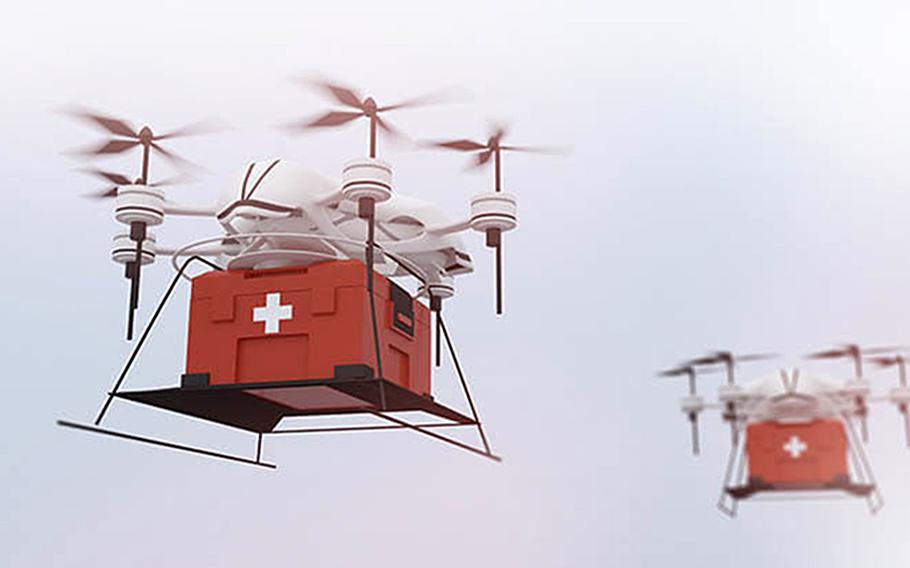
The head of the Army’s Task Force 39 says the unit is interested in testing blood deliveries by drone in the Middle East. Tests were carried out in the Mojave Desert last year. (Military Health System)
The U.S. military’s newest tech unit in the Middle East has aspirations for robots and artificial intelligence, but first it wants to check out the gear soldiers use now.
Army Task Force 39 plans to evaluate all the things that end up in a stuffed deployment bag to the Middle East.
A soldier from the unit will travel to U.S. bases in the Middle East next month to photograph what troops wear and compare that to what they’ve been issued.
“We want to know the difference between what we think we know and what’s reality,” Col. Adontis Atkins, the unit’s leader, told Stars and Stripes in a recent interview. “See how the soldiers are wearing kit that was issued to them, kit that may have not been issued to them that they’re wearing.”
The task force, which formed in November and is based at Shaw Air Force Base, S.C., also is working on a simulator to help soldiers train on anti-drone systems and will test a phone app that will allow people to report suspected drones, Atkins said.
The threat of small and cheap aerial vehicles reminds Atkins of when the Army had to develop signal jammers to thwart improvised explosive devices in the early 2000s.
“We tried to innovate technologies to combat that,” Atkins said. “I see (counter-drone efforts) in that same vein.”
For now, Task Force 39 consists of two officers, a master sergeant and a contractor. The group plans to recruit technical experts from countries such as Kuwait and Saudi Arabia, Atkins said.
One upcoming project is bringing semi-autonomous cargo trucks to the Middle East, Atkins said. Previous tests of the experimental vehicles at Fort Bliss, in Texas and New Mexico, involved a convoy in which trucks used artificial intelligence to follow a lead vehicle driven by a person.
The task force also wants to explore the use of aerial drones to deliver blood to wounded soldiers on the battlefield, which the Army tested at Fort Irwin, Calif., last year.
“Getting these new capabilities tested in (the Middle East) is what we bring to the table,” Atkins said. “Actually getting it in the hands of soldiers and getting that feedback.”
The Army’s Task Force 39 is the youngest of a trio of U.S. Central Command’s innovation cells that started with the Navy’s Task Force 59 and the Air Force’s Task Force 99
The task forces will meet weekly, and Air Force and Navy task forces will collaborate at an exercise for the first time soon, said Schuyler Moore, Central Command’s chief technology officer.